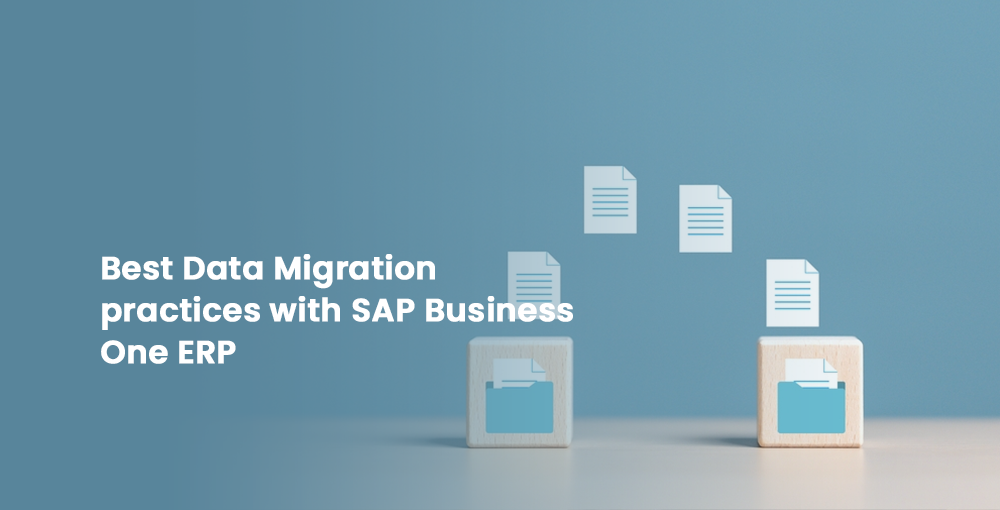
Best Data Migration practices with SAP Business One ERP
In the digital era, information has become an invaluable asset to enterprises. It is acceptable to say that virtually all modern businesses are utilizing digital tools, running their operations, and managing data. Even though it seems issue-free, some challenges remain, such as data migration – The most crucial elements in change. There is a need to relocate data from traditional legacy systems to an advanced one, and all the data inside the system, to a more competitive Enterprise Resource Planning solution. Although it is achievable, it is also complicated without the proper setup.
Transitioning to a new ERP system such as SAP Business One is equally intense. This undertakes the safe transfer of the user’s data, which includes their customers, suppliers, employees, and others. Although ERP systems such as SAP Business One have many capabilities of preventing data losses during the migration phases, the planning and implementation processes, etc. involve many challenges.
Now, let us understand some of the best practices to consider while shifting to SAP Business One.
- Data assessment and cleansing: Before implementation, an organization must assess data available and remove any unclean records. This stage alerts an organization of any invalid entries, incorrect format, or missing data, in the existing data. Only the available, high-quality records should be transferred to the new software, and all others should be discarded.
- Familiarization with SAP Business One data model: the move to SAP B1 is vital to understand the structure and relationships between different entities, such as business partners, customers, and personnel. Alongside, it is necessary to understand the compatibility and suitability of the existing data to transfer it into SAP B1.
- Detailed data mapping: From source to the target system developing a mapping document that describes each data field transferred from the source to the target system is also essential. The work would become a guiding source of information and decrease multiple errors.
- Utilizing Data Migration Tools: SAP Business One enables third-party applications to carry smooth process of extracting, transforming, and loading which results not only in faster migrations, reducing critical manpower but also in elevating prepared data sets for migration while reducing error.
- Mock Migrations for User Validation: Carrying out mock environment for companies to run a test migration to understand mistakes and gather user feedback in the testing is essential for a smooth transition.
- Incremental Migration: This approach involves data migration in stages, batches, focusing on certain cohorts, or entities.
- Data Verification and Validation: The validation post-migration step involves data accuracy by making sure that the information in SAP B1 is accurate. The post-migration process ensures that business processes run smoothly, and employees can work efficiently by ensuring data integrity.
- Post-Migration Support and Training: This helps in resolving any issues that may arise after the process. Training users in how to use systems including SAP business one and the new data structure to adapt. Clear communication on timeframe, milestones, and expected system changes is beneficial for the users.
- Backup and Rollback: Regular backups of user data before starting the migration process may be simple but best back-up practice. In case of any unforeseen challenges along the way or after, a rollback plan is also crucial.
Conclusion:
A well-executed data migration is important for a successful SAP Business One implementation. With best data practices, organizations can prevent all possible disruptions into their businesses when implementing SAP Business One ERP. It is also recommended that organizations should seek guidance from SAP experts and consulting companies like SoftCore Solutions; the best SAP B1 implementation partner in Hyderabad.
Contact us for more information on SAP Business One data migration or book a free demo with our specific industry experts.